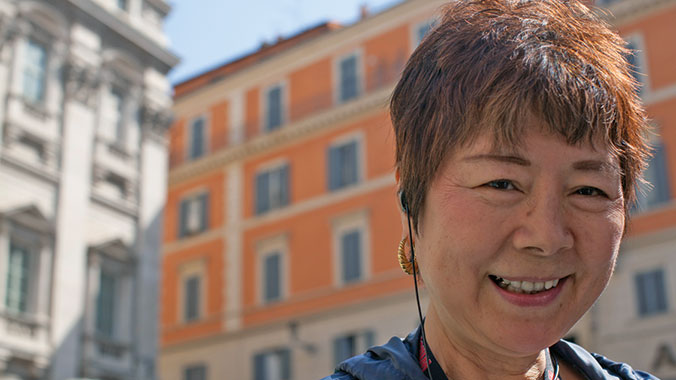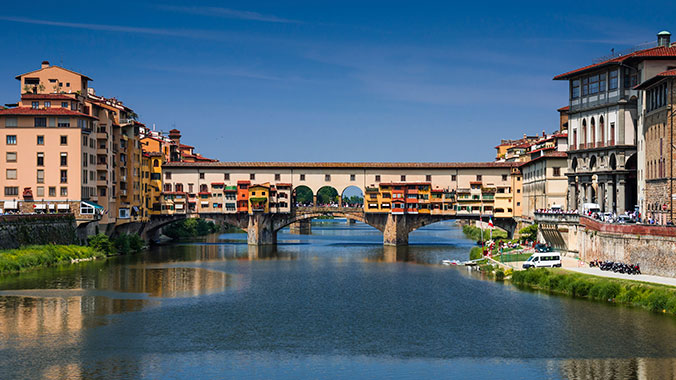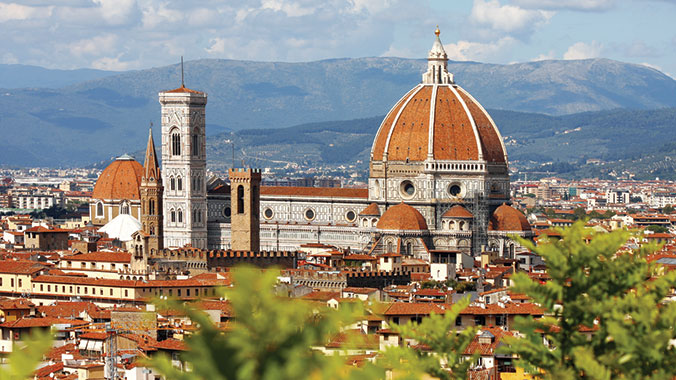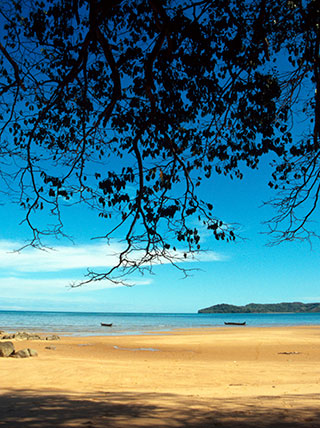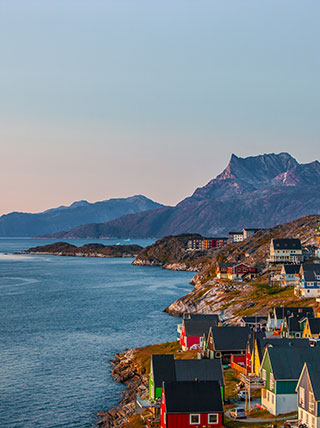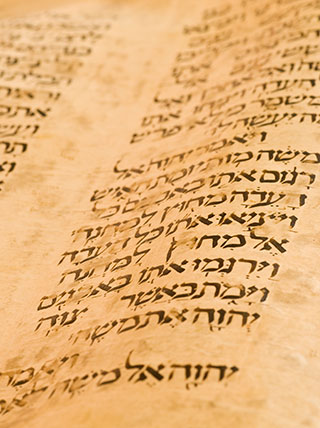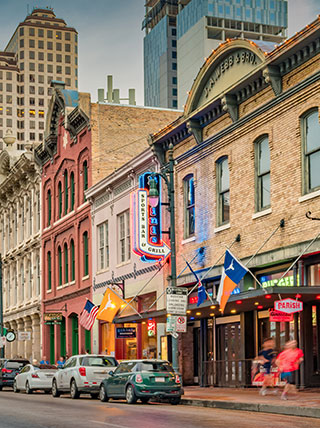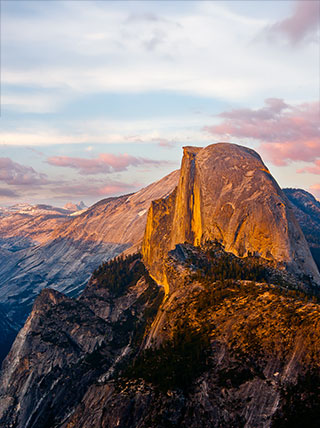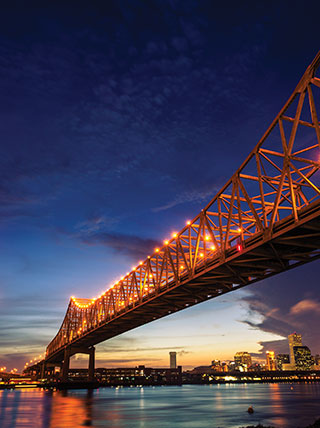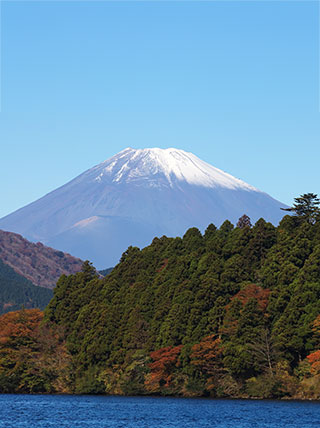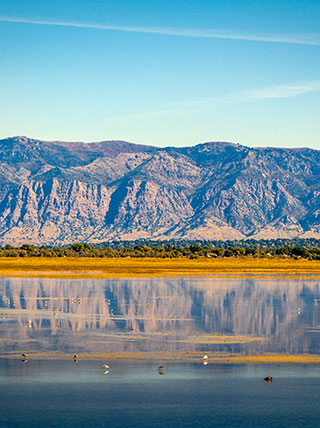Italy
The Hidden Treasures of Florence
Program No. 18647RJ
See a side of Florence rarely shown to outsiders as you enjoy inside access to the Museo del Duomo, explore palaces and aristocratic mansions and attend lectures at private galleries.
Enroll with Confidence
We want your Road Scholar learning adventure to be something to look forward to—not worry about. Learn more
Protecting the Environment
We offset a portion of the emissions created by your travel. Learn more
Itinerary
While we make every effort to ensure the accuracy of our published materials, programs are typically advertised more than a year prior to their start date.
Read More.
While we make every effort to ensure the accuracy of our published materials, programs are typically advertised more than a year prior to their start date. As a result, some program activities, schedules, accommodations, personnel, and other logistics occasionally change due to local conditions or circumstances. Should a major change occur, we will make every effort to alert you. For less significant changes, we will update you during orientation. Thank you for your understanding.
Duration
10 days
9 nights
What's Included
16 meals (
8B, 5L, 3D
)
13 expert-led lectures
14 expert-led field trips
1 performance
An experienced Group Leader
8 nights of accommodations
Taxes and customary gratuity
Road Scholar Assurance Plan
Day
1
In Transit to Program
Location:
In Flight
Day
2
Arrive Florence, Check-in, Orientation, Welcome Dinner
Location:
Florence
Meals:
D
Stay:
Glance Hotel
Activity Note
Hotel check-in from 03:00 p.m.
Afternoon:
After checking-in at the hotel and getting your room, take some time to freshen up and relax as the remaining participants arrive.< br> Orientation: The Group Leader will greet everyone and lead introductions. We will review the up-to-date program schedule, discuss roles and responsibilities, logistics, safety guidelines, emergency procedures, and answer questions. All activities will be led by the Group Leader unless specified otherwise. Each day will have a minimum walking distance of 2 miles. Periods in the schedule designated as “Free time” and “At leisure” offer opportunities to do what you like and make your experience even more meaningful and memorable according to your personal preferences. The Group Leader will be happy to offer suggestions to visit the Brunelleschi Dome. Program activities, schedules, personnel, and indicated distances or times may change due to local circumstances/conditions. In the event of changes, we will alert you as quickly as possible. Thank you for your understanding. Before dinner, we’ll enjoy a welcome cocktail together.
Dinner:
At a local restaurant.
Evening:
We’ll continue getting to know each other, settle in, and get a good night’s rest for the full day ahead.
Day
3
Lectures, Central Food Market, Cappelle Medicee, Free Time
Location:
Florence
Meals:
B,L
Stay:
Glance Hotel
Activity Note
Walking about 2 miles on cobblestone streets.
Breakfast:
At the hotel.
Morning:
We will enjoy a lecture at the hotel given by a local professor focusing on Michelangelo, his genius, and his relationship with the town of Florence. We will get to know the evolution of Michelangelo's style throughout his artistic career, and about the innovative and characterizing elements of Michelangelo's works in the context of the historical-cultural panorama of the moment. The Lecture reconstructs the initial path of Michelangelo's artistic production, analyzing his still immature language, but already characterized by coherent formal research, which opens up to the mature phase in the early years of the 16th century with his absolute masterpieces of sculpture and painting such as David and Tondo Doni. We will walk with our professor through the Central Food Market of San Lorenzo, a unique experience of the senses. The area of the Food Market is large enough for twelve individual stalls or sections, each dedicated to a different Italian specialty such as cheese, Chianti wine or baked goods. Each individual ‘laboratory’ showcases Italian specialties from all over the country and allows visitors to see the process firsthand with clear glass windows that reveal what really happens behind the scenes. We will watch how bread is made, how the famous bufala cheese is handcrafted or watch how artisan gelato is still made from scratch. This floor of the market is not only a hub for food but acts as a cultural center for culinary traditions throughout Italy. Many of the specialty items represent a different method of production, dating back in time, calling upon old Italian cultural traditions.
Lunch:
At a local restaurant,
Afternoon:
We’ll continue our walk to the Cappelle Medicee, The burial place of the Medici family, considered a national monument and museum. It features the “Sagrestia Nuova”, whose architecture and sculptures are by Michelangelo Buonarroti, the “Cappella dei Principi”, a monumental grand ducal mausoleum, and the crypts below. The Museum of the Cappelle Medicee consists of the funeral chapels of the Medici family declared national monument and transformed into a state museum in 1869 for their fundamental artistic and historical meaning, as recognized by the then-recently united Italy. We will enjoy an on-site lecture on a precious and significant narrative of the Medici family and of Michelangelo’s mature phase. Free Time. Take this opportunity for personal independent exploration to see and do what interests you most. The Group Leader will be happy to offer suggestions.
Dinner:
This meal has been excluded from the program cost and is on your own to enjoy what you like. The Group Leader will be happy to offer suggestions.
Evening:
At leisure.
Day
4
Museo dell'Opera, Santa Croce, Lectures, Concert
Location:
Florence
Meals:
B,L
Stay:
Glance Hotel
Activity Note
Getting on/off minivan. Walking about 1.5 mile on cobblestone streets.
Breakfast:
At the hotel.
Morning:
We will start the day with a walking field trip to the Duomo square. We will visit the Museum of the Opera, where our local professor will give an on-site lecture on Gothic and Renaissance art, focusing on the absolute masterpieces of Arnolfo di Cambio, Lorenzo Ghiberti, Donatello, Luca della Robbia and Michelangelo, and on Brunelleschi’s design for the dome, to learn more about Brunelleschi’s amazing achievement. The Museo dell'Opera del Duomo is one of the unmissable museums of Florence, both for the number of its masterpieces, and for the knowledge of the history and art history of the city and its Cathedral, and for the beauty of the museum itself, with spaces full of light, carefully designed displays, a clear visit route that invites visitors to delve deeper and stop.
Lunch:
At a local restaurant.
Afternoon:
We’ll walk to Santa Croce (Basilica of the Holy Cross). This is the richest medieval church in Florence and the largest Franciscan church in the world. This church features frescoes by Giotto, a chapel by Brunelleschi, and the tombs of Michelangelo, Galileo Galilei, Machiavelli, and a cenotaph to Dante Alighieri. It is considered the Italian Pantheon for the toms of so important people buried here. We will enjoy a lecture on Florence war and flood held by the local professor, author of the book published in English for ATS Editrice in 2016. Florence suffered two great tragedies in the middle of last century: World War II in 1944 and the flood in 1966. Almost razed to the ground around Ponte Vecchio by the Nazi mines, the city was invaded by the raging muddy waters of the Arno River twenty-two years later, but the Florentines were able to overcome the catastrophes with “inexhaustible intellectual and moral resources”. We will visit the Basilica of the Holy Cross enriched by a lecture focused on the important cultural value that the Basilica has in the history of Florentine art from the thirteenth century onwards. We will ride by minivan with our Group Leader to the Church of San Francesco Poverino, to attend a private organ concert. After the concert we will walk to the hotel.
Dinner:
On your own.
Evening:
At leisure.
Day
5
Palazzo Spinelli, S. Spirito Church, Medici Palace, Lectures
Location:
Florence
Meals:
B,L
Stay:
Glance Hotel
Activity Note
Getting on/off minivan. Walking about 1.5 mile on cobblestone streets.
Breakfast:
At the hotel.
Morning:
We will ride by minivan to the Palazzo Spinelli for field trip to the Scuola del Restauro, or School of Restoration, where we will learn from expert staff about some techniques and recent developments in the science of conserving and restoring works of art. We will enjoy an on-site lecture on the restoration art of paintings on canvas, and on the complex and fascinating work in progress relating to the conservation of masterpieces past.
Lunch:
At a local restaurant.
Afternoon:
We will ride to Santo Spirito Church. We will visit the Church with an on-site lecture held by our local professor on the quintessential and ingenious facets of Renaissance architecture present in the Basilica and, in particular, on Michelangelo’s contribution to the majesty of the church. As a young man, Michelangelo drew inspiration for one of his most significant works, the wooden Crucifix. We will ride by minivan to Palazzo Medici Riccardi, the first Medici Palace, where Cosimo the Elder and Lorenzo the Magnificent lived and artists such as Donatello, Michelangelo, Paolo Uccello, Benozzo Gozzoli and Botticelli worked. The real jewel of the building is the Chapel of the Magi frescoed by Benozzo Gozzoli in the fifteenth century. We will enjoy an on-site lecture on Art and works of Benozzo Gozzoli held by a local professor. The lecture takes place through an illustration of Gozzoli's artistic style and the description of the most significant and important work of the artist: the series of murals in the Magi Chapel. It is also highlighted how the Chapel's fresco cycle reveals a new Renaissance interest in nature with its realistic depiction of landscapes and vivid human portraits. We will walk to the hotel.
Dinner:
On your own.
Evening:
At leisure.
Day
6
Uffizi Gallery, Lecture, Free Time
Location:
Florence
Meals:
B,D
Stay:
Glance Hotel
Activity Note
Getting on/off minivan. Walking about 1.5 miles on cobblestone streets.
Breakfast:
At the hotel.
Morning:
We’ll ride by minivan to the Uffizi Gallery. The Uffizi is one of the most important and influential ancient and modern art museums in the world. Its construction dates to 1560 when Cosimo I de' Medici involved the architect Giorgio Vasari in the design of the Uffizi, finished by Bernardo Buontalenti. They were the administrative and judicial headquarters of Florence. The museum was opened during the 18th century thanks to Pietro Leopoldo of Lorraine who donated the management of the grand ducal assets to the Italian State. Inside the Uffizi there is an important heritage of classical antiquities, international pictorial works, prints, drawings, and decorative works, mostly coming from the Medici collections. During the twentieth century, the new layout proposed by Carlo Scarpa, together with Ignazio Gardella and Giovanni Michelucci, made the Uffizi Galleries a modern museum, according to new layout criteria. Among the masterpieces preserved in the Uffizi, the works of Italian primitives stand out for their importance, such as Duccio, Giotto and Cimabue, and the works of the Italian Renaissance and sixteenth century where the masterpieces of Piero della Francesca, Botticelli, Raphael, Leonardo, and many others stand out still. We will enjoy an on-site lecture on the painters who influenced Michelangelo’s artistic training such as Giotto and Masaccio: an illustration of the different painting styles of painting from the thirteenth to the fifteen and sixteenth century.
Lunch:
On your own to enjoy what you like.
Afternoon:
We’ll then enjoy some personal independent exploration at the Uffizi Gallery.
Dinner:
At the local restaurant.
Evening:
At leisure.
Day
7
Casa Vasari, Museo Horne, Lectures, Free Time
Location:
Florence
Meals:
B,L
Stay:
Glance Hotel
Activity Note
Getting on/off minivan. Walking about 1 mile on cobblestone streets.
Breakfast:
At the hotel.
Morning:
We’ll ride by minivan to Casa Vasari and visit the Great Hall decorated by Giorgio Vasari round 1572. Since his death in 1574, The Great Hall has remained untouched by the countless renovation schemes to which the Home has been subjected down the centuries. We will enjoy an on-site lecture on the dominant artistic thought of the 16th century (Mannerism), and the Florentine artistic expressions of the time. The definition manner was used for the first time by the biographer Giorgio Vasari in his Lives (1550) with the meaning of style. Vasari, who had written the first manual on the history of modern art, thought that modern art began with Giotto and had gradually improved since then, reaching perfection with the great masters of the Renaissance: Leonardo, Raphael and above all Michelangelo. We will then walk to the Museo Horne with our Group Leader and a local professor. Once a private building it was donated by the owner Mr Herbert Percy Horne to the town of Florence. Entering the building is a real surprise, with Giotto, Simone Martini, Masaccio, Filippino Lippi, Domenico Beccafumi and Giambologna just displayed as at home. We will enjoy an on-site lecture on Herbert Percy Horne held by a local professor. A description of the birth of the myth of the Renaissance through the eyes and sensitivity of an exponent of Anglo-Saxon culture of the late 19th century. Making contact with the colony of foreign intellectuals’ resident in the Tuscan capital, Horne devoted his energies entirely to the study of Renaissance figurative culture, rapidly establishing himself as a distinguished scholar of Italian art, as well as a sophisticated collector.
Lunch:
At a local restaurant.
Afternoon:
Free Time.
Dinner:
On your own to enjoy what you like.
Evening:
At leisure.
Day
8
Bargello Museum, Lecture, Palazzo Gondi, Free Time
Location:
Florence
Meals:
B,L,D
Stay:
Glance Hotel
Activity Note
Walking about 2 miles on cobblestone streets.
Breakfast:
At the hotel.
Morning:
We will walk to the Bargello Museum. The museum is housed in the oldest public building in Florence, and today showcases the most important collection in the world of Italian Renaissance sculpture. The museum boasts masterpieces by great artists such as Donatello, Verrocchio, the Della Robbias, Michelangelo, Giambologna and Cellini. The collections display a wide variety of artistic genres, including hundreds of weapons, seals, fabrics, waxes, enamels, paintings, ivories, majolica and much more. Many of these masterpieces are unique in the world also for their history, as is the case of the Flabellum of Tournus, dating back to 9th century, or as with all the bronze or marble sculptures that belonged to the Medici family, who keenly treasured them in their art collections from the times of Lorenzo the Magnificent to the last grand dukes of the Medici dynasty. We will enjoy an on-site lecture on Michelangelo’s background in a more complete way through Donatello's masterpieces. The lecture highlights Michelangelo lasting legacy through the works of the sculptors deeply influenced by him. We will walk to Palazzo Gondi, where Marchese Gondi will take us on a field trip of this elegant renaissance palace with definitive architectural, historical and familial explanations. The palazzo was designed for the Gondi family in 1490 by Giuliano da Sangallo, a favorite architect of Lorenzo de Medici. The exterior of the Palazzo displays the classic layered design with each successive story a smoother, more subtle reflection of the one below. The open, central courtyard features a lovely fountain and columns with delicate and varied Corinthian capitals. A monumental staircase with detailed carvings on the steps leads to the upper stories with personal treasures of the Gondi family. A terrace garden on the top floor provides privileged rooftop views of the Duomo and the central city.
Lunch:
At Palazzo Gondi, we will be treated to a tasting of regional Tuscan wines from the family’s own vineyards, each specially paired with a light appetizer.
Afternoon:
Free time.
Dinner:
At a local restaurant. We’ll share some of our favorite experiences from the program with fellow Road Scholars.
Evening:
At leisure.
Day
9
Free Time, Torrigiani Gardens, San Miniato al Monte, Lecture
Location:
Florence
Meals:
B
Stay:
Glance Hotel
Activity Note
Getting on/off minivan. Walking about 1.5 miles on cobblestone streets.
Breakfast:
At the hotel.
Morning:
Free Time.
Lunch:
On your own to enjoy what you like.
Afternoon:
By minivan, we’ll ride to the Torrigiani Gardens, the largest private garden inside any European city hidden in the heart of Florence. Starting in the 16th century as a famed botanical garden, it was expanded in the 19th century into an English-style romantic park. The gracious Marchese Torrigiani will lead us walk through this enchanting landscape, pointing out the characteristic features of the Roman gardens. By minivan, we’ll ride to San Miniato al Monte to visit the church, and a local professor will give an on-site lecture on an illustration of an extraordinary monument of Florentine Romanesque through an eschatological path that is expressed by means of a symbolic language, which the faithful of the Middle Ages were able to understand, unlike us contemporaries. We’ll then return to the hotel by minivan.
Dinner:
On your own.
Evening:
At leisure. Be sure to prepare for check-out and departure in the morning.
Day
10
Program Concludes
Location:
In Flight
Meals:
B
Activity Note
Hotel check-out by 11:00 a.m. See the travel information section regarding transfers.
Breakfast:
At the hotel depending on departure time. This concludes our program.
Morning:
If you are returning home, safe travels. If you are staying on independently, have a wonderful time. If you are transferring to another Road Scholar program, detailed instructions are included in your Information Packet for that program. We hope you enjoy Road Scholar learning adventures and look forward to having you on another rewarding program in the future. Don’t forget to join our Facebook page and follow us on Instagram. Best wishes for all your journeys!
Please select a day to update the map
Map details are not available for this location.

